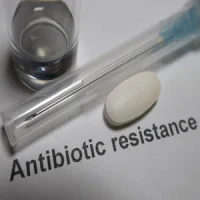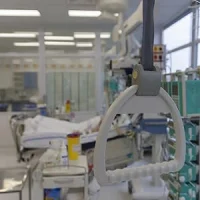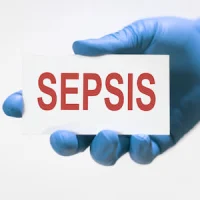Ventilator-associated pneumonia carries enormous morbidity and mortality, including prolonging hospital stay and increasing the cost of healthcare. In most cases, ventilator-associated pneumonia occurs without any specific signs or symptoms. Making an accurate diagnosis is often difficult. Unlike the past, the administration of empirical antibiotics is no longer the standard of care because the liberal use of antibiotics has led to the development of bacterial resistance.
Over the years, researchers have attempted to develop markers for ventilator-associated pneumonia, but so far, there has been very little success. In the last few years, there have been reports that low levels of interleukin 1-beta and interleukin 8 in the bronchoalveolar lavage fluid may be effective markers for excluding ventilator-associated pneumonia. In the VAPrapid2 trial, researchers tried to determine whether the concentration of these two interleukins in bronchoalveolar lavage fluid could safely and effectively improve antibiotic stewardship in patients with clinically suspected ventilator-associated pneumonia.
This multicenter randomised controlled trial was conducted in 24 ICUs in hospitals from the UK. Patients admitted to the trial were 18 years or older, intubated and mechanically ventilated for at least 48 hours, and were suspected of having ventilator-associated pneumonia. Patients were randomly assigned to either the empirical use of antibiotics or biomarker-guided recommendation on antibiotics (the intervention group). The study included 210 patients who were randomly assigned to the two groups - biomarker-guided recommendation on antibiotics (n=104) and routine use of antibiotics( n=106). Patient randomisation was stratified by site but allocation was concealed. Clinicians were not informed about patient assignment for the initial period until biomarker results were reported.
Bronchoalveolar lavage was performed in all patients and the concentration of interleukin 1-beta and interleukin 8 were determined in patients assigned to the biomarker-based antibiotic recommendation groups. In cases where the concentration of the interleukins was below the validated cut-off, clinicians were told that ventilator-associated pneumonia was unlikely and that they should consider discontinuation of antibiotics. Patients assigned to the routine use of antibiotics were treated with the medication as usual. Besides measuring interleukin levels in the bronchoalveolar fluid, microbiology was also done and ventilator-associated pneumonia was confirmed when there were at least 104 colony forming units/ml in the fluid. The key primary outcome was the spread of antibiotic-free days in the 7 days following the bronchoalveolar lavage. Data were evaluated on an intention to treat basis.
The results did not show any significant difference in the primary outcome of the distribution of antibiotic-free days in the 7 days following bronchoalveolar lavage in the intention to treat analysis. In addition, bronchoalveolar lavage was also associated with a mild and transient increase in oxygen requirements.
Based on the results, it was concluded that when patients are suspected of having ventilator-associated pneumonia, antibiotic usage is common. The performance of bronchoalveolar lavage and measurement of interleukins to exclude ventilator-associated pneumonia did not change the pattern of antibiotic usage. The researchers feel that the real problem is that there is a culture of prescribing antibiotics in ICU and clinician behaviour towards antibiotic usage is clearly an important factor that needs to change.
Source: The Lancet
Image Credit: iStock
References:
Hellyer TP et al. (2019) Biomarker-guided antibiotic stewardship in suspected ventilator-associated pneumonia (VAPrapid2): a randomised controlled trial and process evaluation. The Lancet. DOI:https://doi.org/10.1016/S2213-2600(19)30367-4
Latest Articles
antibiotic resistance, antibiotics, ventilator-associated pneumonia, Bronchoalveolar lavage, interleukins
Findings from the VAPrapid2 trial show that biomarker-guided exclusion of ventilator-associated pneumonia did not reduce antibiotic use.










